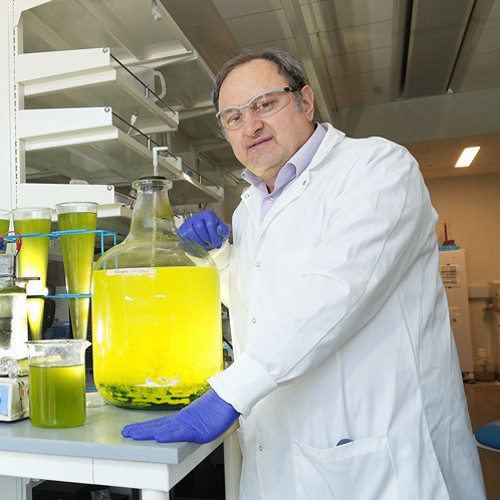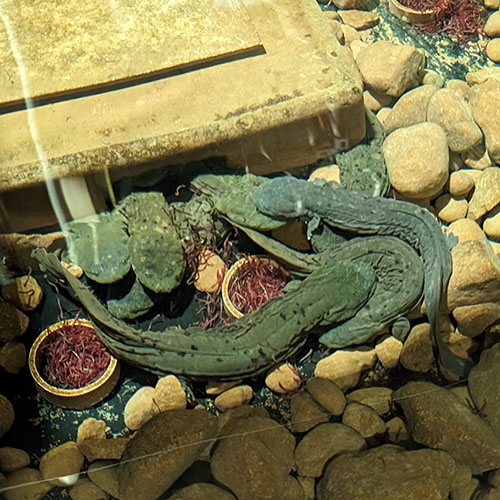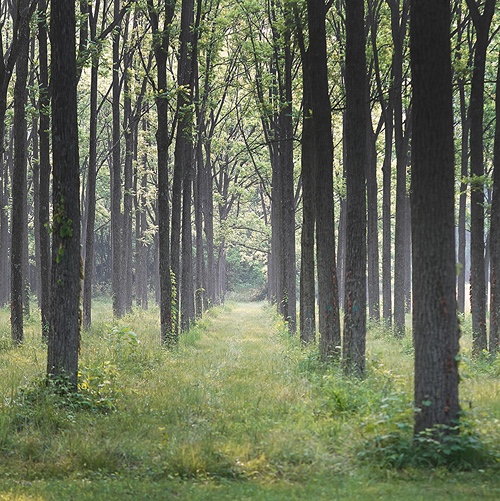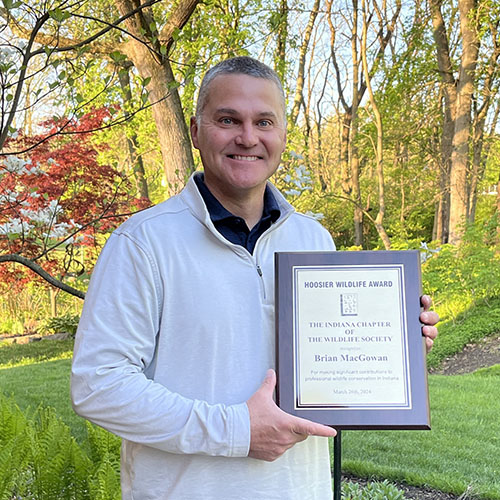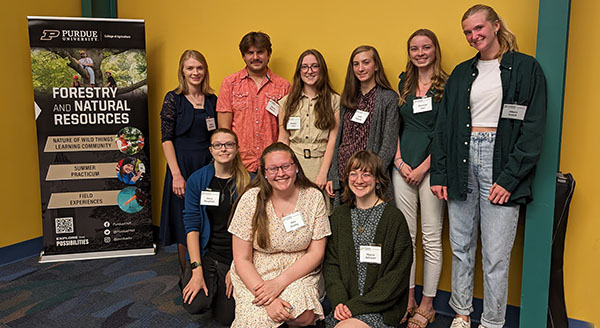“Working in wildlife is a passion project.” – Adam Janke, 2023 FNR Outstanding Young Alumnus, BS Wildlife 2009
Adam Janke, a Monticello, Ind., native, has been obsessed with birds since he was a small child. It all began near Lake Freeman, where he hunted and fished with his father, but it has become a life-long passion that has Janke not only researching various species, but also spreading the word on wildlife management to his students and many Iowa residents as an associate professor and extension specialist at Iowa State University.
“I knew I wanted to be a wildlife biologist for as long as I knew I could be one,” Janke recalled. “I was a kindergartner talking about birds, mainly because I was obsessed with hunting. I went on my first duck hunt as a kindergartner and became obsessed with ducks and geese and that obsession has persisted until today. I can actually remember the first time I realized there was such a thing as a wildlife biologist, a waterfowl biologist specifically, someone who studies ducks, geese, swans, etc., and I can remember the article I was reading in Ducks Unlimited magazine that referenced it. I can also remember the appearance of the website at Purdue where I first found a major called wildlife during my freshman year of high school. From that moment on, I never doubted what I wanted to study and do.”
Once Janke arrived at Purdue, he was full throttle on all things wildlife and began to build a resume of field experience through club involvement and research opportunities.
He was involved with the student chapter of The Wildlife Society (TWS) all four years, as well as the Purdue chapter of Ducks Unlimited. He was president of Ducks Unlimited and also served as an officer for TWS for two years, acting as president his senior year.
Janke’s introduction to The Wildlife Society not only impacted him through experiences but also offered an introduction to his future.
“I remember meeting the then president of TWS, Michael Steiner, at a club fair and he told me two things: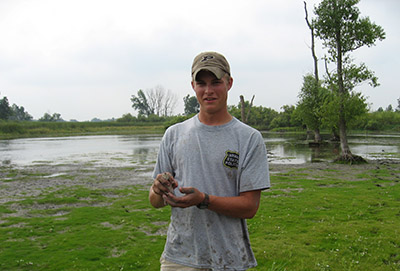 you have to go to grad school to be a wildlife biologist and you should be active in this club,” Janke said. “I had never heard of grad school and had no idea what a graduate degree was, but I was excited to join the club and I ended up doing both of those things. We did a lot of cool and fun things through The Wildlife Society, including working at a deer check station on Crane (Naval Surface Warfare Center – Crane). I also went to the national TWS conference twice, once in Tucson and once in Miami with the group.”
you have to go to grad school to be a wildlife biologist and you should be active in this club,” Janke said. “I had never heard of grad school and had no idea what a graduate degree was, but I was excited to join the club and I ended up doing both of those things. We did a lot of cool and fun things through The Wildlife Society, including working at a deer check station on Crane (Naval Surface Warfare Center – Crane). I also went to the national TWS conference twice, once in Tucson and once in Miami with the group.”
Janke got his first taste of research care of Dr. Rob Swihart and PhD student Zach Lowe.
“I vividly remember when Dr. Swihart invited me to be a technician on a vole feeding trial out at the Purdue Wildlife Area, looking at whether or not there was a fescue toxicity,” Janke shared. “That was a really nice gesture from him and an early research experience for me. I then started working for Zach Lowe, who was finishing his PhD studying savannah reconstruction, doing habitat management trials, herbicide trials, native grass establishment and some prescribed fire. I was just a grunt for him, doing herbicide trials and washing containers, etc., but we did a lot of interesting things, especially later in that position. We once took a tractor and planting equipment all the way to Kansas to plant a prairie and food plot out on a farm there.”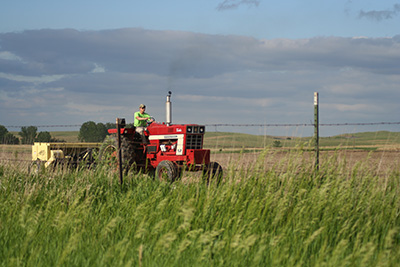
In addition to working with Swihart and Lowe, Janke picked up valuable lessons and skills as an intern for the forestry staff at Martell Forest.
“We harvested walnuts,” Janke recalled. “I love telling that story to students because it’s like, ‘how do you harvest walnuts,’ with two hands and a five-gallon bucket. You just pick them up. It is not more sophisticated than that. It was back breaking labor. In the fall, we picked them up, then hulled them by driving over them with a bobcat. I also did grunt work such as did mowing and maintenance of various forms, but I got a lot of really cool land management experience. It wasn’t particularly glorious work, but it was good due to the financial income and the natural resources applied work.”
Janke also built his resume and career skills through summer undergraduate positions. He worked as an intern biologist for the U.S. Fish and Wildlife Service at Horicon National Wildlife Refuge, then returned to Horicon the following summer as a wildlife technician with the Wisconsin Department of Natural Resources after attending Summer Practicum. His last two summers were spent as a research technician for the North Dakota Delta Waterfowl Foundation and the Purdue Department of Forestry and Natural Resources. In FNR, he worked in a paid internship with Zach Lowe, assisting with the Conservation Leaders for Tomorrow program and some continuing work with habitat trials.
“The solidification that this was actually what I wanted to do came that first summer at Horicon National Wildlife Refuge,” Janke said. “I came back from that internship and I was 100 percent sure I had chosen the right field. I couldn’t believe that I was riding in airboats, lighting fire, running chainsaws and all of this really cool stuff for work.
“The third summer, when I worked for the Delta Waterfowl Foundation, was a really formative experience, because there were people from all over North America out there in this tiny town we took over for research and all of them were gearing towards going to grad school,” Janke recalled. “It was a really cool experience. We worked really hard and had a lot of fun, but I remember we had GRE study books out on the coffee table and everyone was talking about professors and how to connect and how to get into grad school.”
Another standout experience for Janke was Summer Practicum in the Upper Peninsula of Michigan.
“The U.P. was awesome for a number of reasons,” Janke shared. “One, it was a totally different ecosystem, a northern hardwood forest ecosystem that was new to me, and it was really interesting to learn and be in that place. Second, the cohort experience, where all of the people you had been in classes with become familiar and become really good friends, had such a positive impact on the rest of my experience at Purdue. Getting to know the faculty and the students in my classes and learning about the diversity of topics and diversity of people were all really instrumental in having a good experience at practicum. Now that I am on this side of the desk, I understand how expensive it is and how hard it is to ask faculty to leave their families and research, but it was such a formative experience and that is really special for Purdue. Purdue is really unique in their commitment to that curriculum.”
After graduating from Purdue in 2009, Janke earned his master’s degree at Ohio State University under Dr. Robert Gates, completing his thesis on “Survival and Habitat Use of Non-Breeding Northern Bobwhites on private lands in Ohio” in 2011.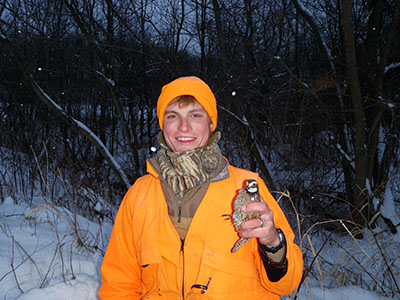
“Dr. Gates was a duck person, he had a duck project and I was still obsessed with ducks, but the funding for the duck project fell through,” Janke said. “He had funding for the project on bobwhite and asked if I would be interested. I said, ‘not really,’ but he said, ‘I think it would be really good for you and I think you should take this.’ I finally said OK, and I’m really glad he talked me into it. All I wanted to do was study ducks and that project opened my eyes to be interested in so much more.
“I basically lived with Northern bobwhites for two winters. We lived in a farmhouse in the middle of one of our study areas where we radio marked coveys, or small social groups, of quail and tracked how they spent their winter and followed them around. Every day we woke up, drank coffee, went and found our bobwhites, marked where they were, tallied who was alive and who wasn’t, etc. I learned so much about the ecology of the bird, but also the relationship between people and the bird because we were on private farms in rural Ohio. We talked to these landowners every day and learned what they liked and didn’t like about wildlife, what they knew and didn’t know about wildlife and why they managed their land the way that they did. That has been really foundational to my approach to education ever since.”
While earning his master’s degree and acting as a teaching assistant at Ohio State, Janke had an epiphany while taking one of his classes to Winous Point Marsh on the coast of Lake Erie.
“We taught students how to do secretive marsh bird surveys and other wetland vegetation sampling and I realized that I really missed wetlands,” Janke said. “Even though I had fallen in love with bobwhites, I really missed wetlands. After that, I really got serious about seeking out a PhD studying wetlands and wetland birds. And that is how I ended up at South Dakota State, studying ducks in wetlands.”
Yet again, Janke’s research immersed him in the habitat of the species he was studying as well as in the lives of nearly 300 local landowners for his dissertation: A physiological assessment of wetland habitats for spring-migrating ducks in the agricultural landscapes of the southern Prairie Pothole Region.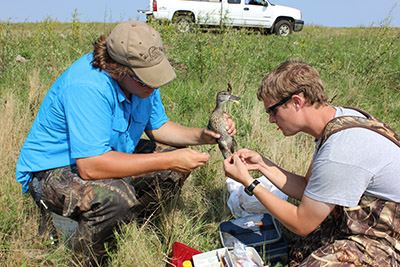
“I lived with ducks during spring migration as they were in transit from their wintering areas to their northern breeding areas, some as far north as Alaska,” Janke said. “For four springs, I studied these ducks as they transited across South Dakota’s really intensively farmed agricultural landscape and used the wetlands that remain in that matrix. We were trying to understand whether or not those ducks were getting what they needed out of the wetlands in South Dakota. We compared the condition of ducks in their abundance across a gradient of wetlands, from those which were farmed right up to the edge of the wetland to those that were in pristine landscapes of native pasture grass in the watershed of the wetland. Interestingly, we found that the ducks made a living on any wetlands they encountered throughout the Dakotas, which is a really cool story about how people and wildlife coexist.”
Janke stepped right into his dream job as a faculty member and extension wildlife specialist at Iowa State University after completing his PhD in 2016.
“I went to school for 11 years and then I got my dream job that I might be in for 40,” Janke shared. “I wasn’t looking for this job, but when I saw it, I thought that all of my training had equipped me really well for it. I had never worked in Iowa, but I had worked in every ecosystem we have in Iowa: Eastern deciduous forests, tall grass prairies, savannas, prairie wetlands, river wetlands, etc. Iowa is really proud of its agricultural heritage and its agricultural economy and all of the places that I had lived also fit into that mold. I also think I have a pretty good understanding of the environmental challenges that the systems of agriculture in the Midwest create, and how we can find, through research, win-win solutions for people, wildlife and water in the agricultural landscape.”
In his role, Janke is a wildlife educator and researcher with responsibilities in teaching, research and extension. His work has focused on the distribution patterns, demographics and physiology of birds in relation to habitat attributes or changes, including weather and land use.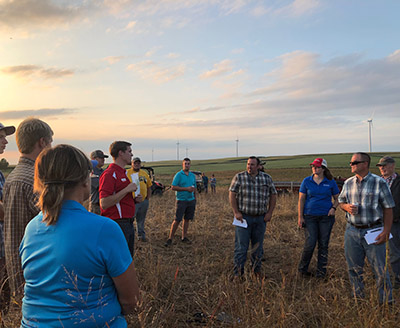
“I teach primarily through the extension mission of the university, but also in classrooms on campus,” Janke explained. “I also do research, then ideally I find the intersections between my research and my classroom or community-based teaching. It comes down to the unifying thread that I study where birds live on farms. I then try to understand the things that certain farmers are doing that help birds on their farm and get other farmers to do more of the same, in ways that are mutually beneficial for birds and people.”
Over the last seven years at Iowa State, Janke has studied on wetland birds, song birds and game birds, and applied findings of his research to aid the conservation and preservation of wildlife across agricultural landscapes.
“My work tends to be about the interface between people and wildlife,” Janke said. “How can we conserve wildlife populations in intensively farmed landscapes and how can we connect people with wildlife populations in meaningful ways so that they are interested in their preservation and conservation long term? Sometimes we study the birds that we do because they are good ambassadors for the rest of the wildlife species. A collaborator and I are advising two students that are explicitly examining this concept in the wildlife world called umbrella species, which are charismatic and conspicuous, meaning people care about them and can observe them. We know that if you do things right by the umbrella species, a lot of other species that are less conspicuous or charismatic or are harder to study, will benefit from those same practices. In our case, we are studying Northern bobwhites in Iowa and how they respond to the implementation of conservation practices on private lands. Bobwhites live on farms and are conspicuous for the entire year, which makes them unique among many species of wildlife. We know that what is good for bobwhites tends to be good for other species of birds as well as reptiles, amphibians, insects and mammals, so we manage for bobwhite habitat, knowing that many species of concern will also benefit.”
Janke has shared his research through his extension work both locally and nationally. He is the co-leader of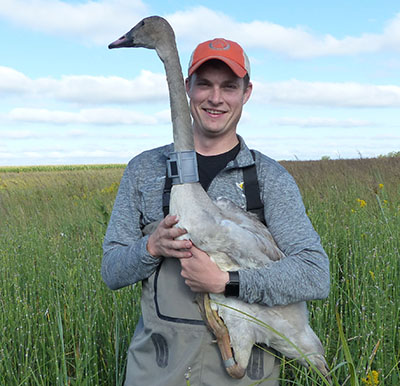 the Master Conservationist program in Iowa, which takes adult learners through a seven-week curriculum about land stewardship in the state. He teaches a Chronic Wasting Disease Ambassadors class in collaboration with the Iowa Department of Natural Resources, which educates community leaders, natural resource professionals, hunters and landowners about the challenges of the disease, its effects on white tailed deer, and effective management practices. He also leads the Land Stewardship Leadership Academy, a nine-month program that teaches early to mid-career natural resource professionals how to implement water and wildlife conservation practices while also understanding the complex landscape in which land stewardship plays out on privately-owned farmlands. The course aims to help conservation professionals avoid potential pitfalls, while developing trust and empathetic relationships with landowners.
the Master Conservationist program in Iowa, which takes adult learners through a seven-week curriculum about land stewardship in the state. He teaches a Chronic Wasting Disease Ambassadors class in collaboration with the Iowa Department of Natural Resources, which educates community leaders, natural resource professionals, hunters and landowners about the challenges of the disease, its effects on white tailed deer, and effective management practices. He also leads the Land Stewardship Leadership Academy, a nine-month program that teaches early to mid-career natural resource professionals how to implement water and wildlife conservation practices while also understanding the complex landscape in which land stewardship plays out on privately-owned farmlands. The course aims to help conservation professionals avoid potential pitfalls, while developing trust and empathetic relationships with landowners.
Janke also is the chair of the 4-H Wildlife Habitat Education Program National Committee, where he works to organize a yearly national youth education program for high school students.
Beyond his local outreach opportunities, Janke has teamed up with FNR extension wildlife specialist Jarred Brooke to create the Habitat University podcast, which is part of the Natural Resources University podcast network. The podcast, which delivers the latest science-based information on habitat management, began in December 2020 through a grant from the Renewable Resources Extension Act, and boasts more than 20 episodes over two seasons. The NRU podcast network received the gold award in the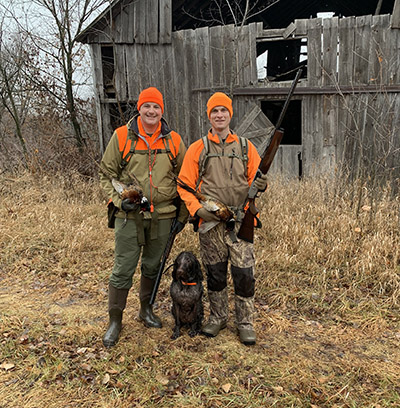 radio or podcast category from the Association of Natural Resources Extension Professionals in April 2023. The Habitat University podcast has been downloaded more than 43,000 times across all 50 states and 26 countries.
radio or podcast category from the Association of Natural Resources Extension Professionals in April 2023. The Habitat University podcast has been downloaded more than 43,000 times across all 50 states and 26 countries.
In addition to his outreach efforts, Janke has worked to make the entire natural resources field a better place to work. He is involved nationally as the co-organizer of the of the Out in the Field Initiative – an LGBTQ+ visibility initiative of The Wildlife Society – and locally as the chair of the Diversity, Equity and Inclusion committee for the Iowa State Department of Natural Resources Ecology and Management.
“I work with other faculty, staff and students on the topics of diversity, equity and inclusion within the profession,” Janke said. “We are trying to build a more diverse and inclusive community here within our program, but also toward the natural resource discipline more broadly. Everybody should have access to healthy and fulfilling natural resources and associated recreation or enterprises. To do that, we have to break down some historical systems of inequity that exist there. I think that is a really important role for university programs to play and our committee tries to help our department do that for our students and professionals.”
Janke has been honored for his work both inside and outside of the classroom, earning the title of Most Beloved Animal Ecology Professor from Iowa State University in 2019, the Early Faculty Achievement in Extension and Outreach Award from the College of Agriculture and Life Sciences in 2020 and the Award for Early Achievement in Extension or Professional Practice from ISU in 2020.
In the spring of 2023, Janke received the Iowa Conservation Award of Merit, which is presented by the Iowa Chapter of The Wildlife Society to an individual for his or her contributions to conservation in the state.
“It is the highest award given to wildlife biologists in the state by The Wildlife Society,” Janke said. “The feeling I got when I received that award was similar to when I was named best camper at Summer Practicum. It is one thing when an administrator tells you that you are doing a good job, but it means a lot more and is really cool to be elected by your peers.”
Janke was nominated for the FNR Outstanding Young Alumnus Award by three fellow Purdue FNR alums: Jarred Brooke, Randy Knapick and Cody Rhodin, all of whom graduated with bachelor’s degrees in wildlife in 2012.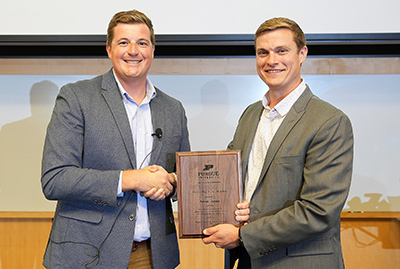
“Adam is an exemplar of an outstanding young FNR alumnus,” Brooke said. “He is the epitome of a professional wildlife biologist. His body of work showcases his ability to navigate the many facets of the natural resource profession. He can effectively discuss natural resource conservation opportunities with landowners, collaborate on determining science needs for waterfowl and upland game birds in the Upper Mississippi/Great Lakes region, and educate K-12 and undergraduate students all in a single day. Not only has Adam contributed to the advancement of wildlife conservation through his research, extension, and teaching roles, but he has also made strides to improve the wildlife profession itself, through his work to create a more welcoming and inclusive environment.”
Despite all of his accolades and many contributions to the field of natural resources and extension, Janke’s advice to future natural resource professionals is simple.
“If you think you want a career in natural resources or wildlife, you are right,” Janke shared. “Wildlife is a passion project. People in this profession are uniformly passionate about the topics. They are not here for the money, the fame or the awards, they are here because they are really interested in and passionate about this field. If you work for it and bring your talents, energy and perspective, there is a job out there for you. Don’t apologize for your different ideas. We certainly have a lot of challenges that face us and we need people who have a lot of different ideas and ways of thinking about these issues. There are wildlife jobs everywhere, broadly defined. Diversify your portfolio experience and where you end up is really up to you. Wildlife biology is not all that complicated. It is a really accessible form of science. You don’t need a fancy analytical machine in a lab, you just need a pair of binoculars and patience.”
